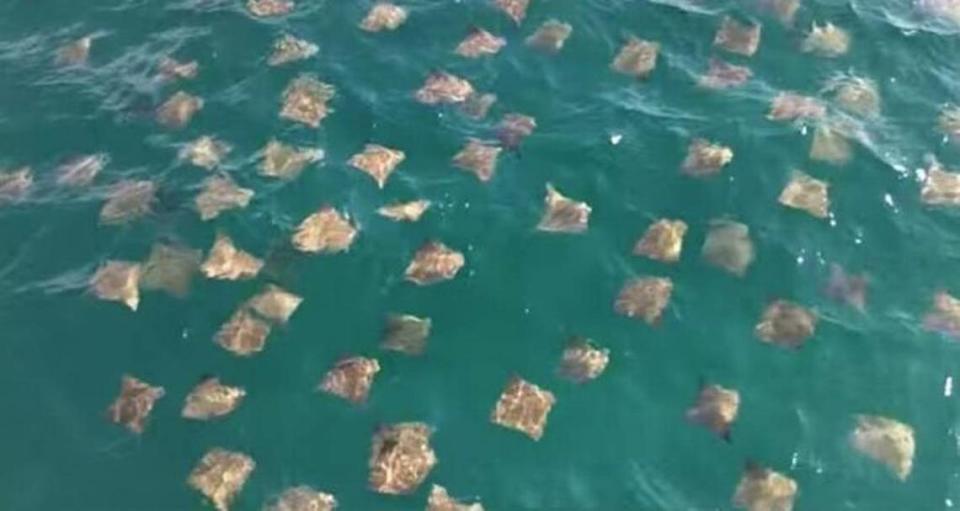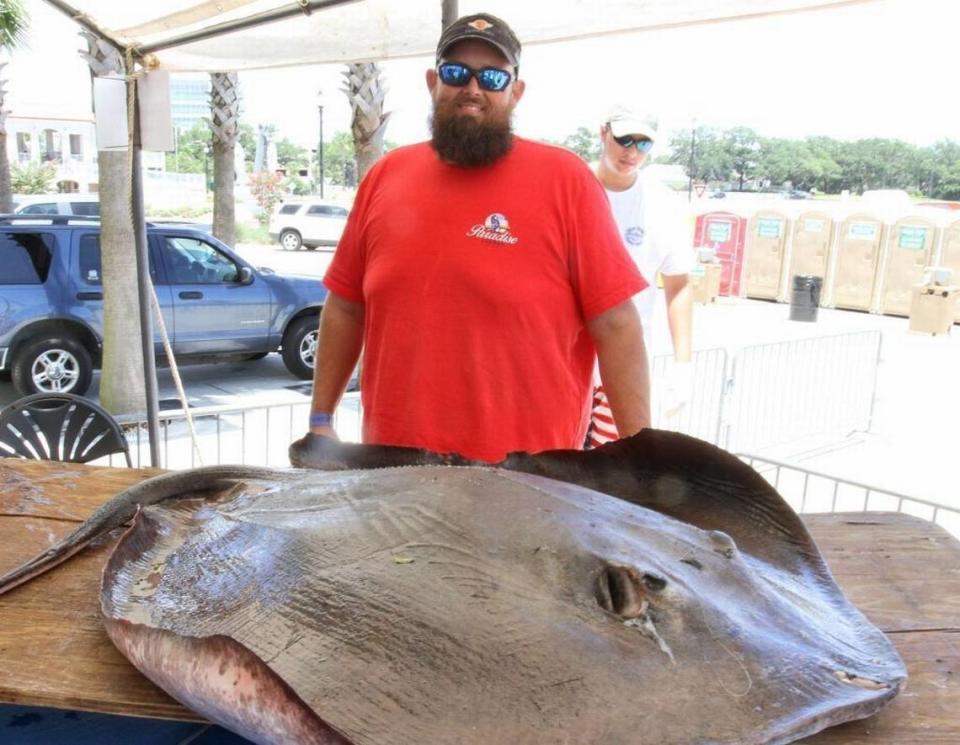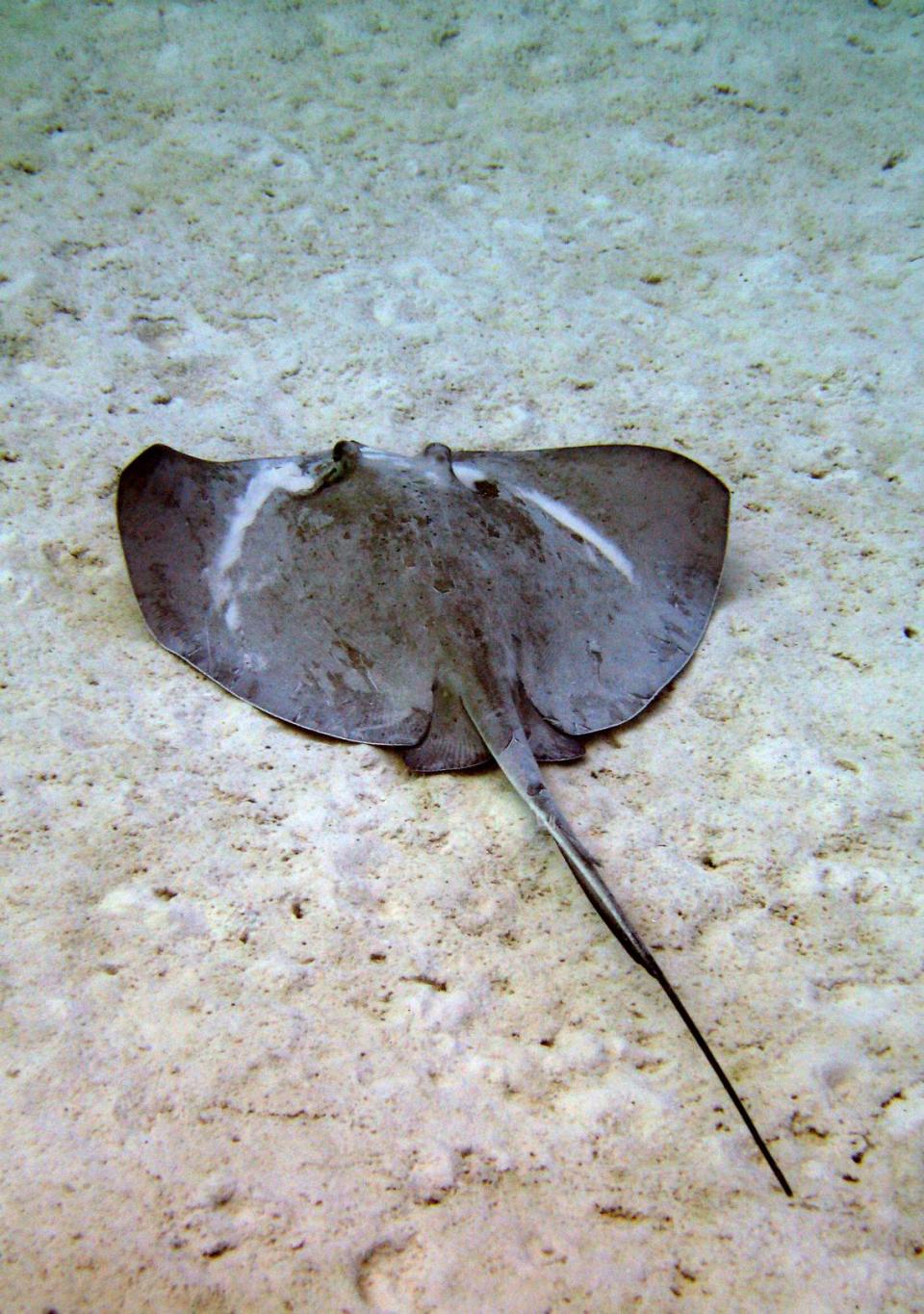Stingray injuries are more common than you may think. Here’s how to avoid them at SC beaches
Have you visited a South Carolina beach recently?
You may have walked past a stingray and not even known it.
If you enjoy spending time in the surf off of any of the Palmetto State’s famed beaches, make sure to be wary. A day at the beach won’t be as fun if it ends in the hospital.

As you, your loved ones or even nearby youngsters play in the shallow surf or walk through the ever-changing tides, many beachgoers generally don’t think about what could be lurking inches away in ankle-deep water.
Stingrays, which can injure hundreds of people in a single area each year, could be a familiar culprit for a shallow-water beach injury that may require a hospital visit.
They can be found along the coast in the spring and throughout the summer as weather and water temperatures continue to warm.
Without taking the proper precautions, locals or tourists alike could easily be on their way to the hospital with a stingray injury even after walking in just inches-deep water.

However, even in the busy summer months with water crowded by nearby individuals, it’s still quite possible to have an injury-free day at the beach.
Here’s what you should know about stingrays along South Carolina beaches.
What are they and what stingray species are common along the coast?
There are many different species of stingrays that can be found along South Carolina beaches.
Luckily, if you’re looking where you step, stingrays aren’t too difficult to spot, as they stand out from other fish you might see nearby. You may either spot them swimming in the shallows of the surf, near a dock or reeled in by local fishermen from the surrounding waters.

Stingrays can vary vastly in size ranging from several inches to several feet in length and weigh hundreds of pounds.
They are bottom-dwelling cartilaginous fish, meaning they are made of cartilage rather than having bones, and have wide, flat bodies. Stingrays also have tails equipped with one to three barbed, venomous spinal blades that release painful toxins.
These venomous toxins cause severe pain when injected into a victim.
With their lack of bones, stingrays are closely related to sharks.
Some ray species that can be found along the South Carolina coast include: southern stingray, bluntnose stingray, roughtail stingray, spotted eagle, smooth butterfly, cownose, bullnose and Atlantic rays.

Can you prevent a stingray injury?
Luckily, stingrays won’t ‘attack’ a human unless they feel threatened by you.
However, this unfortunate circumstance could easily happen by mistake when a stingray gets scared after accidentally getting stepped on while you, a family member or an excited child frolics through the ocean surf.

Because stingrays are not aggressive and do not attack unless they feel threatened, it’s important to remember that stingrays camouflage themselves in shallow sand and that stings can be prevented by ‘shuffling’ through the sand as opposed to taking steps or by throwing rocks or shells ahead of your steps, Hilton Head Hospital detailed in previous Island Packet reporting.
To avoid an injury mishap, no matter how shallow the water may be, always be sure to shuffle or drag your feet through the sand rather than lifting your feet up by stomping, bouncing or walking normally. Taking this preventive measure is the most effective way to prevent an accidental injury from a stingray.
This shuffle, commonly referred to as the stingray shuffle, will warn a nearby stingray of your oncoming approach and close proximity.

Once it has taken notice of your location and mobility, a stingray will likely be scared off and choose to swim away; thus, avoiding feeling the need to protect itself.
Additionally, wearing water shoes can help double your protection against being accidentally barbed by a stingray or even stepping on unknown objects or litter in the ocean, which can cause plenty of injuries as well.
What to do if you get injured by a stingray
“Every year, about 1,500-2,000 stingray injuries are reported in the US,” the National Capital Poison Center says.
When a stingray decides to act, the puncture wound is often deep and considered dirty, which means there is a high risk of infection, and it’s important to wash and disinfect the area immediately.
If you or someone you’re with has been stung, it’s important to seek medical care as soon as possible. If this is not possible, rinse the wound with fresh water followed by immersing the wound in hot water, around 110-115 Fahrenheit, to destroy the toxin. Additionally, you should then attempt to remove any remaining stingers using disinfected tweezers.
Once the barbs have been removed, be sure to clean the wound. If bleeding continues, be sure to apply pressure until it stops. Next, apply antibiotic ointment or cream to the wound and cover it with gauze, changing the dressing as needed, Hilton Head Hospital stated in previous Island Packet reporting. If the wound continues to get worse, seek medical assistance.
If impaled, have the infected person try to obtain a tetanus vaccine or booster if needed, and the wound should be gently inspected for any remaining spines. Medical evaluation and treatment from a hospital is necessary if there are any remaining spines in the wound, if the puncture is deep or if it involves the chest, abdomen or neck areas, according to Poison Control.
Stingray stings nearly all occur on an individual’s feet and lower legs. Although such an injury is painful, it is not considered to be life-threatening.
However, if a sting were to occur in the neck, abdomen or chest, that would be considered a medical emergency and should be treated as such. Additionally, excessive bleeding or signs of anaphylaxis, which would have symptoms such as difficulty breathing, dizziness, abdominal pain, rapid or irregular heartbeat, would be considered a medical emergency and require a 911 call as soon as possible. It is always important to have a plan in case of any emergency and to remain as calm as possible. If you’re ever in doubt and unsure of the right course of action, call 911 as there are resources to help you in a time of need, Hilton Head Hospital continued to describe.
Death from a stingray puncture is a rare occurrence and does not result from the venom but rather from the puncture wound itself. This would be if the barb injury was in the chest, abdomen, or neck. Cases of death from serious infections such as tetanus have also been reported, documented Poison Control.

